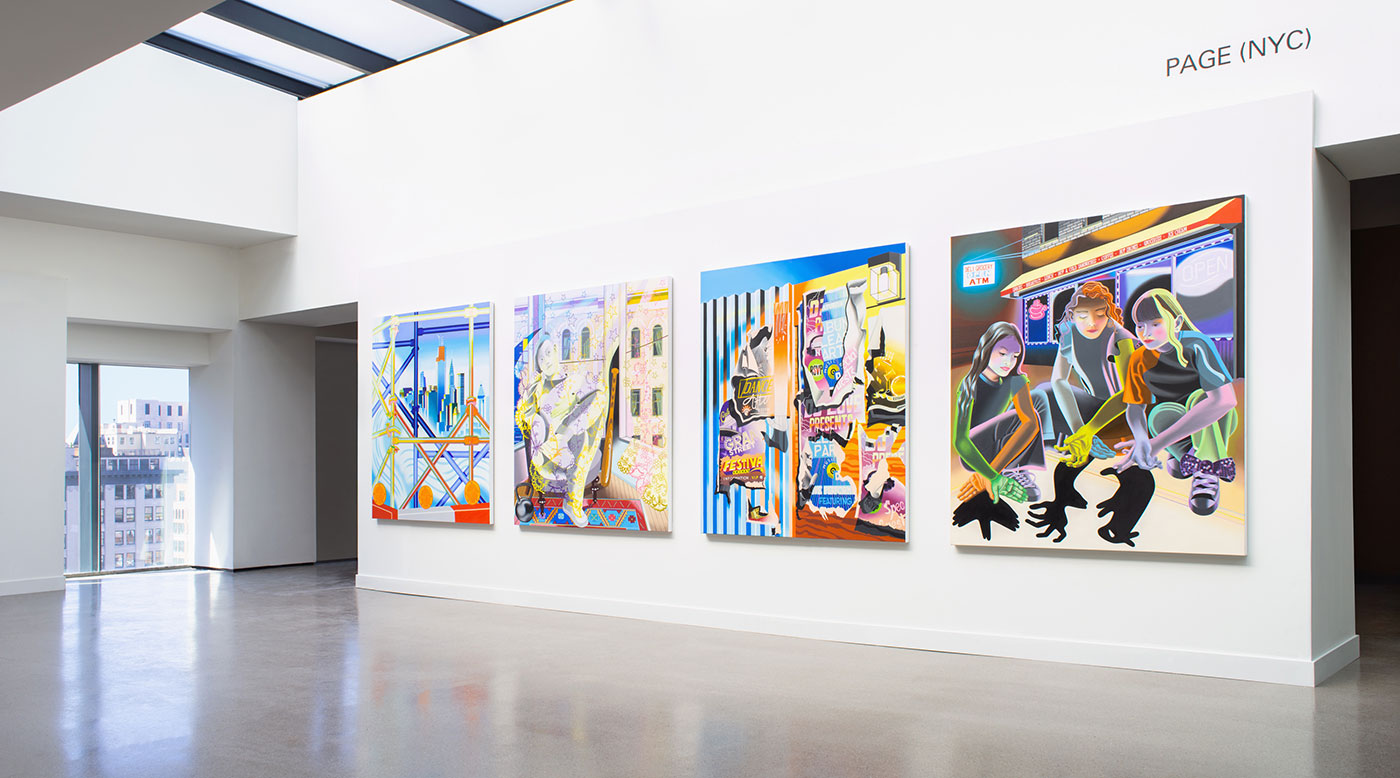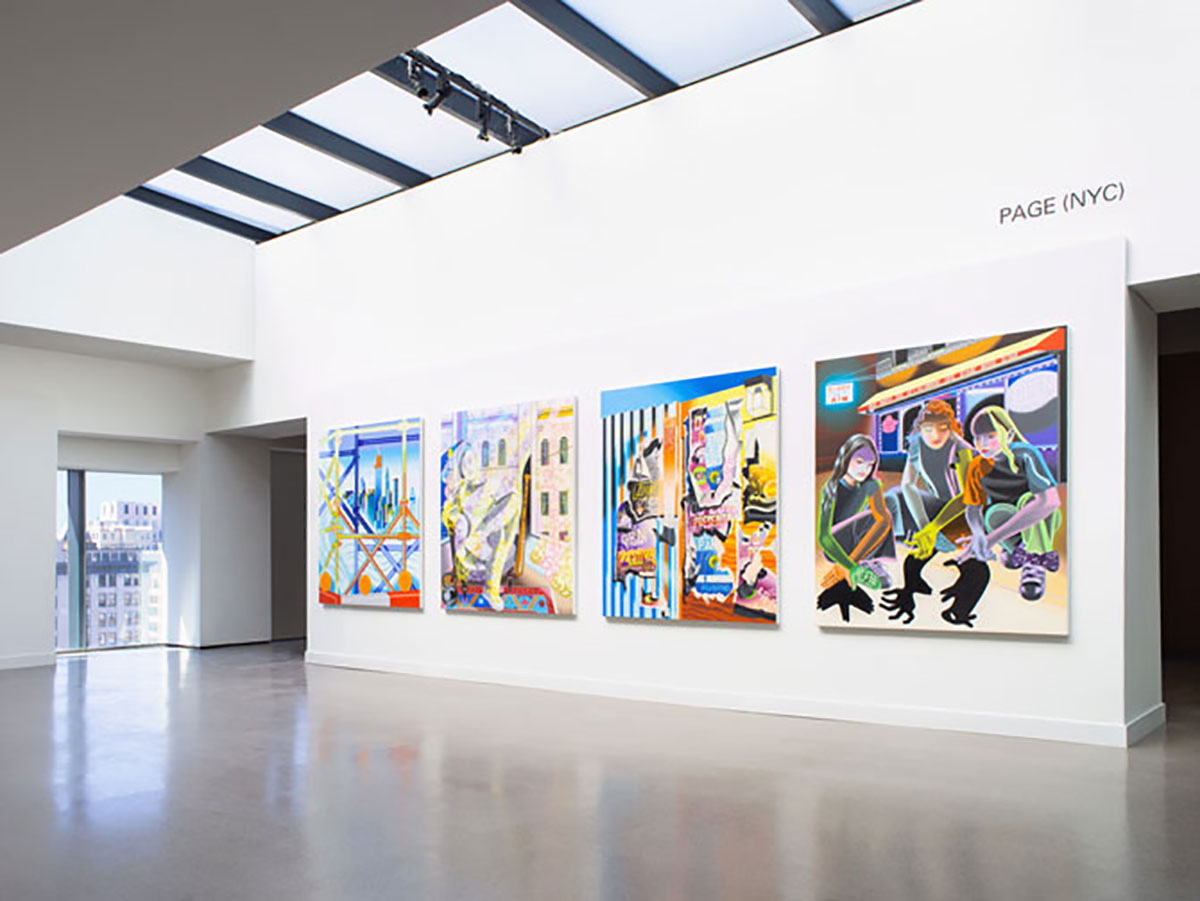SA: So the color pencil drawings are where you work out your ideas. Then when you begin painting, is the composition set?
LR: Yes, but the painting brings a whole different process. The drawings are three times smaller than the painting, so I make a grid on the drawing and then translate it to a bigger scale. I don’t use a projector—I just do it by hand. And then I start working in oil paint. I start out loose and even use a rag to block out the color. Eventually the edges become crisp and the fades within the shapes make it glow. Sometimes I feel like I’m drawing with the paint, which is exciting.
SA: How do you decide on the color palette?
LR: When I’m sketching, I try different color variations. The color can also be very compositional. I knew if I made the top of Friendship dark, the bottom of it would be really light so the shadows would look dark against the light and really pop.
SA: How does your job as an elementary school art teacher influence your art?
LR: It’s huge. I’ve been teaching children for seven or eight years now, and I see myself making my own version of my lesson plans in my work. It’s such a deep part of my life. Supporting the children’s visions, hearing their voices, how they respond to the work, it’s so inspiring and so close to my art practice. I don’t tell everybody that, but it’s true.
SA: What do you love about being an artist?
LR: Learning how to work as an artist is a really exciting thing. Giving yourself the freedom to play all day with composition and move lines around on paper. Somebody could walk into my studio and be like, “Wait, what did you do today? You moved that line from one side of the composition to the other?” But it’s huge work you’re doing because you’re imagining the thing. It’s weird, but the older I get, the more comfortable I am with it.
SA: Do you have any advice for aspiring artists?
LR: I always tell my students to turn your mistakes into art. I’ll draw something really beautifully and then I’ll mess it up. And I’ll be like, “Oh no! I messed it up. What am I going to do?” And they’ll say, “You can fix it! It’s just a layer. You can paint on top of it. It’s just paint.” There should be a fearlessness in artmaking.


